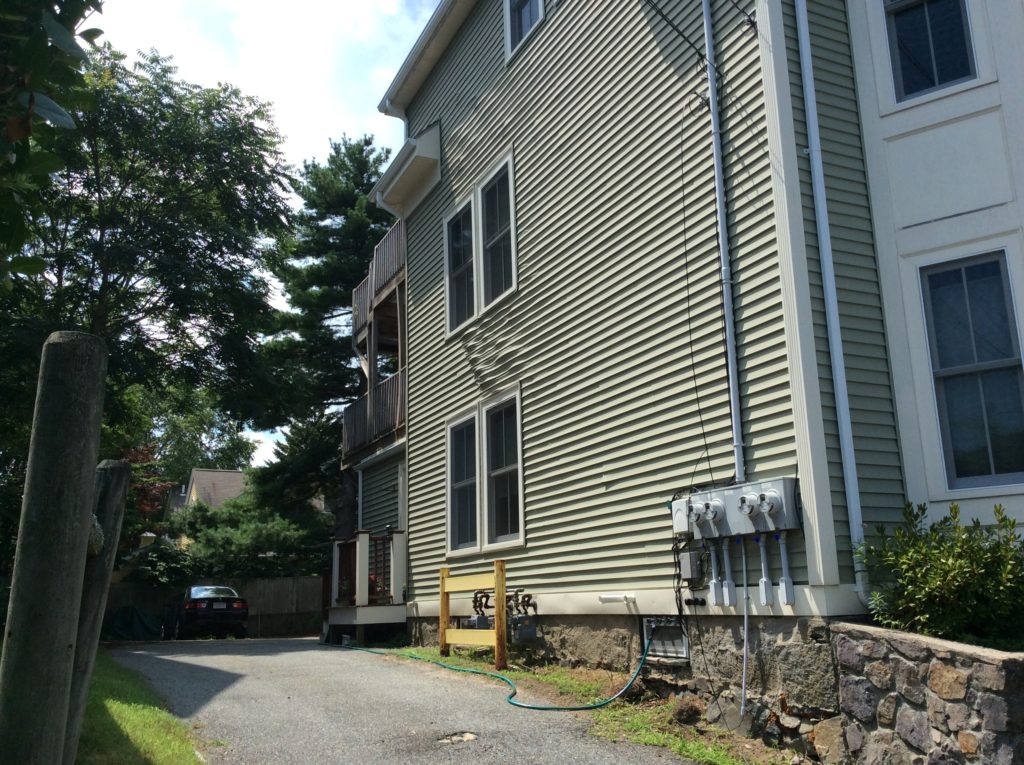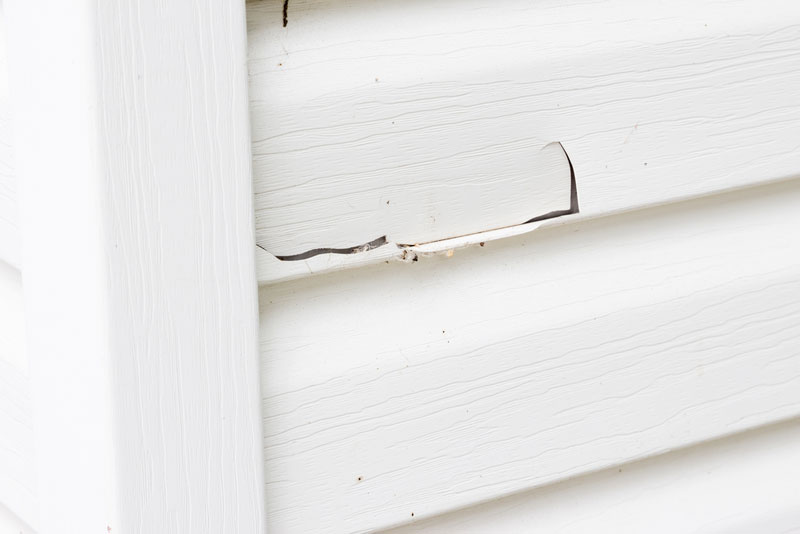However if the fascia boards of the house are made of wood they may sustain damage from woodpeckers drumming on the wood in which case there will be very small holes in clusters at specific points on the fascia boards.
Heat damaged vinyl siding.
If you want siding for your home that looks great and is durable but requires little maintenance look no further.
Vinyl siding is designed to withstand weather and resist moisture damage.
Slide your hand along the wall to disengage the butt bottom edge of the siding.
Houses with aluminum or vinyl siding are not typically prone to woodpecker damage.
As we mention also at vinyl siding installation heat damaged siding shown in our photos below is not a vinyl siding product defect and needs to be distinguished from siding that has buckled from heat from the sun combined with improper nailing.
It can have the look of wood siding without the ongoing work and expense.
Heat reflected sunlight as causes of vinyl siding damage.
While it s not common it is important to know how to prevent a home s vinyl siding from melting due to window reflection.
Vinyl siding is the most fragile of all siding materials and can melt in intense heat or become brittle in cold weather.
This article documents those effects conditions and apparent causes.
The vinyl siding institute vsi states that temperature ranges beginning at 160 165 degrees fahrenheit can soften normal grades of vinyl siding.
Heat from intense sunlight or from reflected sun and heat from nearby windows or other surfaces can cause buckled rippled bent deformed loose or un clipped vinyl siding.
Use a hammer to pull the nails holding the first course of damaged siding to the wall.
Save big with vinyl siding.
Repairing small sections of vinyl siding can be an expensive proposition if you have a repair technician come out for a house call.
When cold vinyl is especially prone to impact damage such as cracking or breaking apart.










